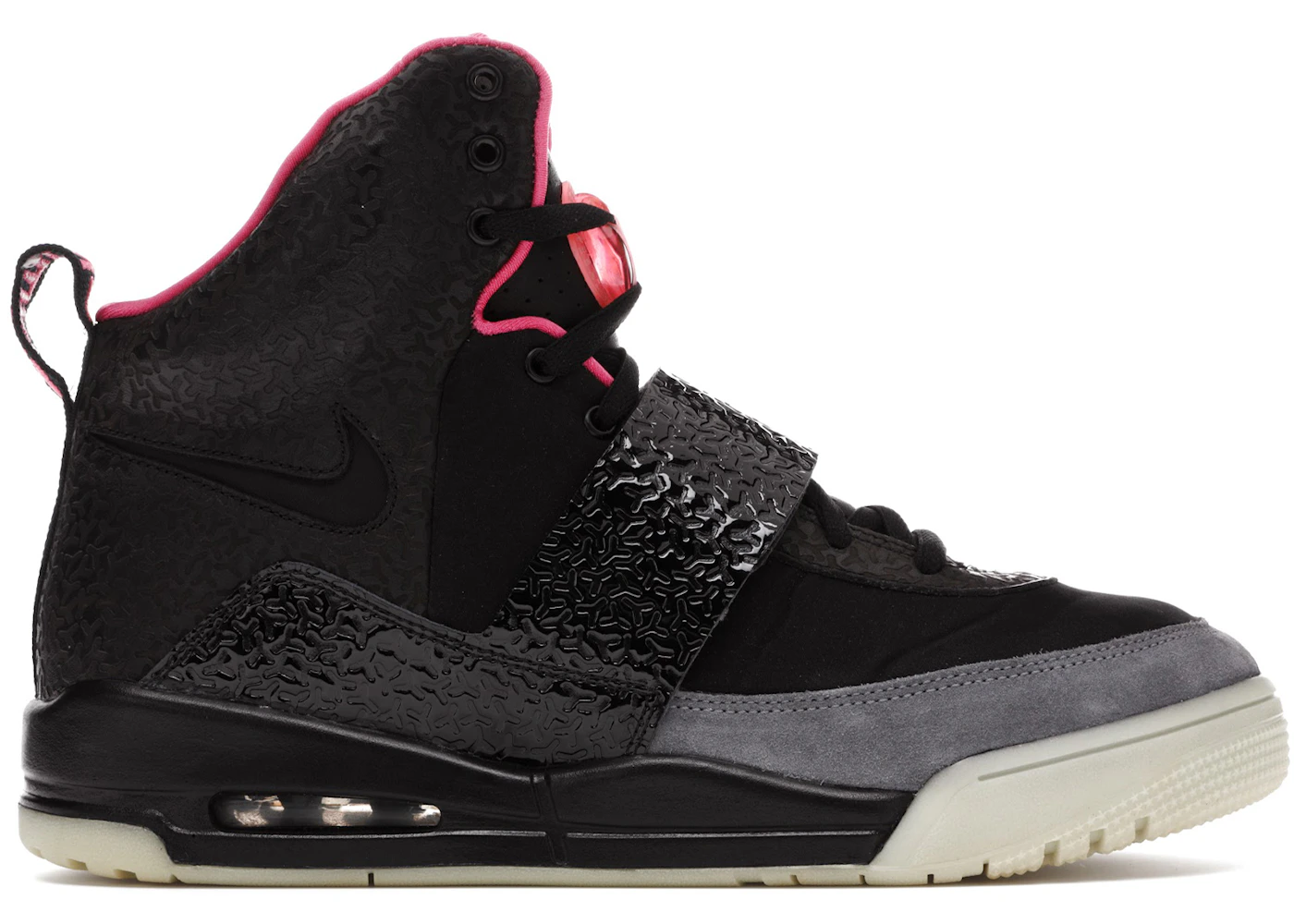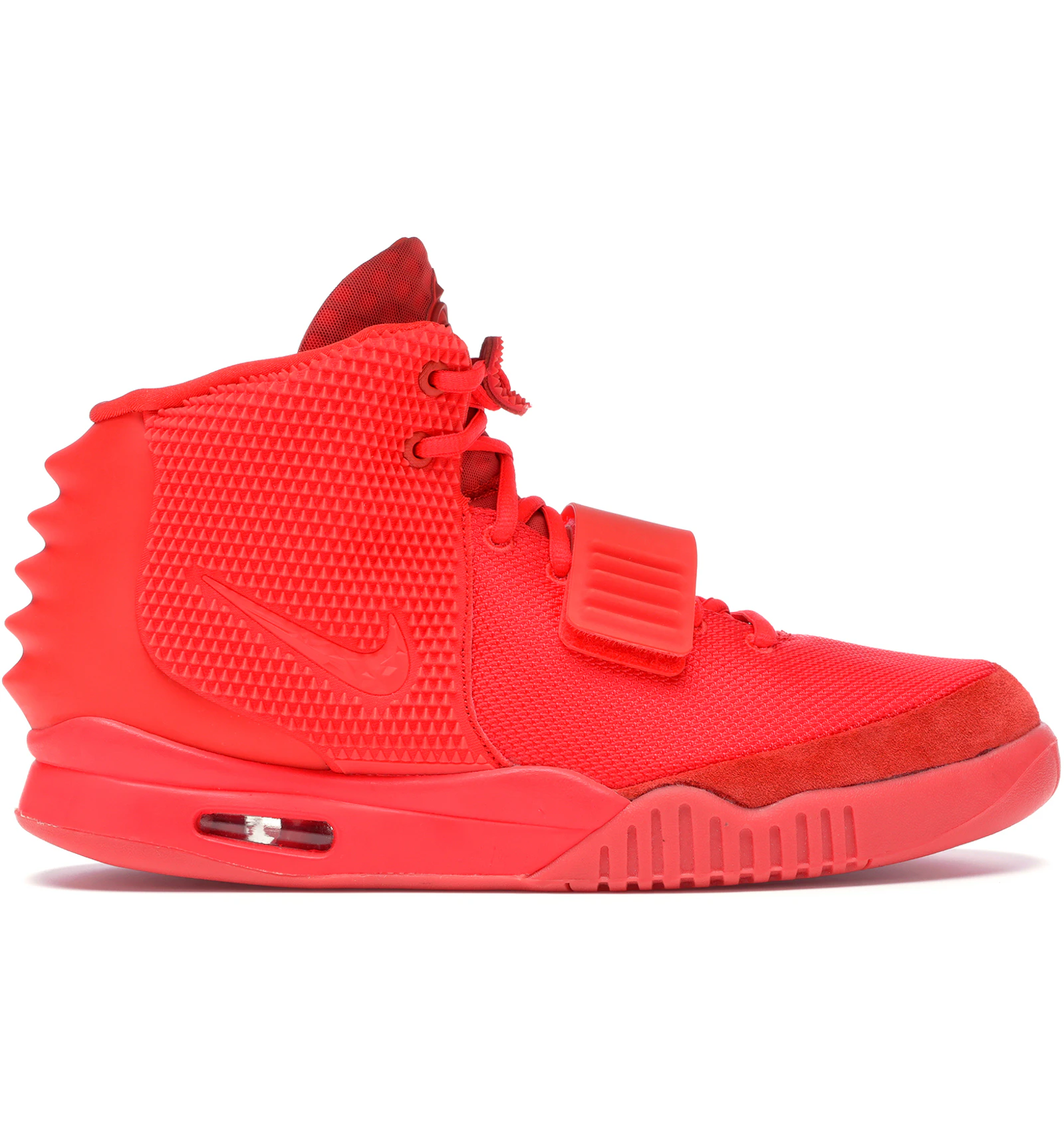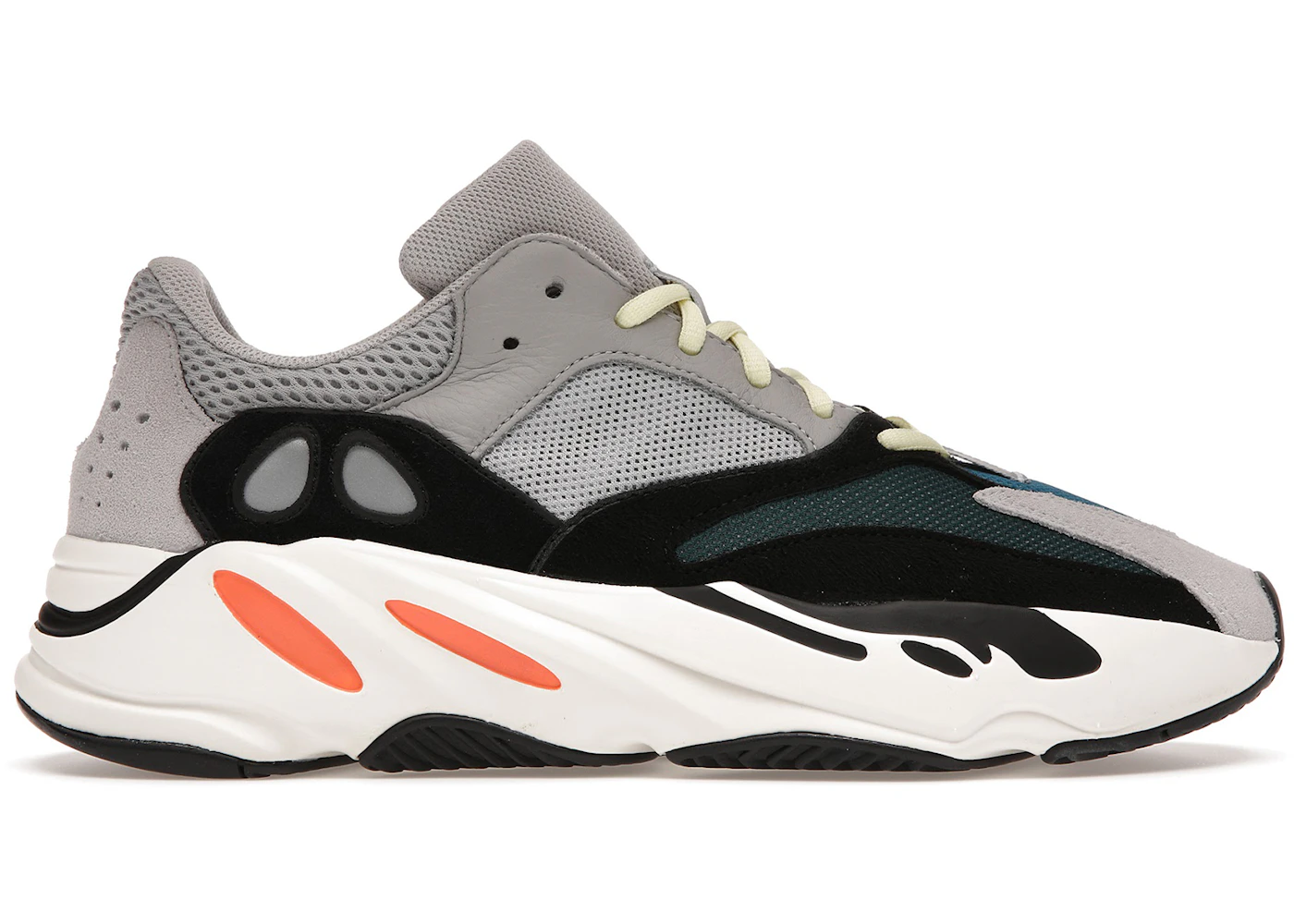Yeezys. People have camped out at shoe stores, hired Taskers to wait in line on their behalf and even used sneaker buying bots to nab a pair online before they sell out in seconds. Others spent thousands of dollars on the resale market. The man behind that craze is Kanye West. But recently, some of that excitement has turned to skepticism.
Are Yeezys dead?
Is Yeezy resale dead?
Is Yeezy still cool?
Certain Yeezy models cost a lot less on the resale market than they used to, and resale prices are a telltale sign of a product's cachet, especially for hypebeasts. But it turns out, this is all part of West's grand plan for his sneaker empire. Here's how West created one of the most hyped sneakers of all time and the struggles he's facing trying to build the brand into a household name.
 |
| Air Yeezy 1 |
When I first got into sneakers back in middle school, into high school, I just had this one pair of Adidas Superstars that I thought was the end all be all. Then I remember scrolling through my Facebook timeline and this beautiful red image of a pair of Kanye's Red October Nike sneakers popped up on my feed, and that was the first time that I stopped to look at a sneaker just from a purely piece of art point of view.
And I just thought to myself, wow, I need to find a way to get those. Over the course of five years, West and Nike released the Air Yeezy 1, the Air Yeezy 2 and the Air Yeezy 2 Red Octobers. Retailing at over $200, the shoes were released in extremely limited quantities and sold out instantaneously.
 |
| Air Yeezy 2 |
They now resell in the thousands of dollars. The success of the shoes finally put West on the map in the fashion industry. For years, his designs were met with ridicule. A lot of fashion gatekeepers tried to hold Kanye back by calling him a clothing maker or saying that he wasn't a real designer. Kanye West was really sort of passionate and desperate and really actually thoughtful. He didn't want to just be sort of a celebrity fashion designer. To break into the fashion industry, West interned at Fendi in 2009, where he was paid about $500 a month. In 2015, West even said he went $16 million in debt trying to get a clothing line off the ground.
But no matter what he did, he still couldn't quite knock down those doors. And so he took an alternative route through the sneaker world. West says he was a speaker head as a kid, even though he didn't have the money to buy the shoes he loved. When I was in fourth grade, I was drawing Jordans when my mama couldn't afford them. I was drawing those Jordans, getting kicked out of class for drawing them. West got his start as a producer on Jay-Z's 2001 album, The Blueprint. He hit it big as a hip hop artist after releasing his own album, The College Dropout, in 2004.
Then West set his sights on another passion of his — fashion. He even told a New York Fashion Week crowd in 2016 that his dream is to be the creative director of Hermes. While West had a difficult time getting people to buy into his clothing designs, his shoes instantly clicked with fans. The first pair of sneakers that really got me into sneaker collecting was that pair of Red October Yeezys. He articulated something in those sneakers that really resonated with me without saying a word, of me not knowing anything about them.
That sneaker was the spark that cascaded the entire rest of everything you see here over the past three plus years. In Yeezy's first eight years or so, hype around the shoe was at its strongest. Yeezy started as a partnership with Nike in 2009 before West switched to working with Adidas in 2013. During the Nike years and in the first few years of his partnership with Adidas, customers went to great lengths to get their hands on a pair.
Any website you go to, Yeezys would probably sell out in like five seconds. I've seen people camp for Yeezys in the dead cold winter. I've seen people like have their little tents or whatever. Or just bundled up in a lot of jackets or something. Caleb Chen is one of many sneaker flippers cashing in on the Yeezys hype. I bought the Bred V2 for about $220 and I've sold it for about $1,100 to $1,200. But some of West's designs have been an acquired taste.
People have scratched their heads or recoiled at certain Yeezy models that West released with Adidas, like the Yeezy Boost 700 Wave Runner, which came out in 2017. It drew comparisons to ugly dad shoes. Everyone across the internet was just like, "Oh my God, what is this? This is disgusting. Is this a joke?" And I had all those same thoughts. But thinking about the big picture, I said every other time people or myself have thought that exact same thing about a sneaker Kanye has put out, people eventually turn around and go, "Oh wow, I was wrong. I wish I jumped on those sneakers when I had the chance."
 |
| Yeezy Wave Runner 700 |
But designing sneakers just for hypebeasts wasn't good enough for West. That's why he ultimately left Nike for Adidas in 2013: more creative freedom and to turn Yeezys into a household name. West told BBC Radio in 2013 that he didn't want to be just another celebrity with his name attached to a sneaker.
People didn't love the Yeezys the way they did for no reason. Picture this. For me to do the Yeezys and not have a joint venture backing deal with Nike the next day would have been like if I made Jesus Walks and was never allowed to make an album. West told Ryan Seacrest that he found the partner he was looking for in Adidas. They offered to allow me to make an entire line and give me an office and all these things I want to do just to create more.
The hype around Yeezys fueled West's ambition. Except the more shoes he released, the less special they became. If you look at somebody like Kanye West, he's truly one of the most ambitious people I think that we have seen in the past few decades. Kanye West has called himself Walt Disney. He's called himself Steve Jobs. So we know that it's not just about a physical sneaker. It's about when he is gone and we are talking about Kanye West, we don't talk about just the music.
We talk about what he's created, what he's left us, his stamp on the world. West wants his Yeezys legacy to go way beyond an expensive and inaccessible shoe. In fact, he wants quite the opposite. West spoke with Ryan Seacrest in 2015. This isn't about elitism. This isn't about separatism. This is about as many people being involved with this vision as possible.
Eventually, everybody who wants to get Yeezys will get Yeezys. Adidas has promised me that because there's so many kids that have wanted them, that couldn't get them. And I talked to the heads at Adidas and they said we can make them. Instead of demand for Yeezys being built on rarity and hype, West wants everyone to be able to find and afford a pair of Yeezys and still want them. Kind of like the Adidas Superstar, which are readily available at their typical retail cost of $100 and under.
And it was the top selling sneaker in the United States in 2016. The Superstar debuted in 1970. To this day, it's still an iconic emblem of the Adidas brand. However, the Superstar's popularity is cyclical and sales have declined in the last couple years. Now Adidas is betting on Kanye West and doubling down on Yeezys. If the goal is to scale Yeezy into a multi-billion dollar brand, experts say there's still a long way to go.
The Yeezy brand has a fundamental impact on our overall brand position. But it's still in the bigger context of us being a $25 billion company, you know, a small part of our company. There were probably a million, maybe a million and a half Yeezys sold last year in pairs in the United States and throughout the world. Adidas made 400 million pairs of shoes last year. A million pairs of Yeezys is really a drop in the ocean. There is a reason why there are the numbers of shoes made by Adidas for Yeezy. It's not because there's no factory space to build the shoes. They simply are creating this artificial sense of scarcity.
When you think about it in that light, it really tells you that the product can't be a larger story. It has to be limited in what it brings. In other words, demand for Yeezys just isn't strong enough to produce the shoe in much larger quantities. Nike and Adidas have never revealed how many Yeezys they release per drop. But West said in 2015 that there were 9,000 pairs of his first Adidas shoe, the Yeezy Boost 750.
 |
| Yeezy Boost 750 |
After all, it took Nike three decades to build its iconic Jordan brand, a collaboration between Nike and former NBA superstar Michael Jordan, into a $3 Billion business. For years, the Jordan business grew about 10 percent a year because that's all that Nike allowed to go into the market — was about 10 percent more. They could have put in 20 or 30 or 50 percent more and probably sold them in the first year, but it would have been gone after that.
But Powell says Nike made a mistake when it flooded the market with too many Jordans in 2017 and 2018. The brand has lost its cachet. Now, can they build it back? Yes, but it will take years. In 2019, Adidas has taken a step back. CEO Kasper Rorsted told investors in May there won't be any significant growth in the Yeezy business in fiscal year 2019.
Adidas won't be repeating another massive Yeezys drop in 2018. Instead, the shoes are being released in more limited quantities throughout the year. The goal is to rebuild hype around the brand. Experts say it will be a long time before West can achieve his vision: a sneaker that everyone wants and thinks is really cool, even if it's not that hard to get.



